Background
1936: Spezialuhr für Flieger, IWCs first pilots watch.
1944: IWC manufactures military watches from UKs MoD (Ministry of Defense) specifications. The watches are issued and has a "arrow" printed on the dial to show it is property of the state and the letters "www" printed, meaning "wrist watch waterproof". The model is later called Mark X
1948/49
Mark XI is issued to navigators in the UK. The watches are tested for accuracy in different positions and temperatures, water pressure, magnetism and shock during 44 days. Reliability and timekeeping is essential since accurate navigation depends on it. After 12 months of active duty, they are tested again.
1993:
Mark XII, 36mm. Now with date complication and a movement from JLC.
1999: Mark XV, 38mm. The last version with the classic style of the hands, now with ETA-based movement.
2006:
Mark XVI, 39mm, movement ETA base.
Sword hands with a close resemblance to the B-Uhr during 1930s-1940s. The numbers 6 and 9 are removed from the dial for symmetry.
2012: Mark XVII, 41mm, ETA based movement, date in altimeter style.
2016: Mark XVIII, 40mm, ETA-base movement.
Sources
https://monochrome-watches.com/an-od...c-mark-series/
HTTP://IWC.com
IWC Mark XVIII
Specifications
Reference number: IW327001
Diameter: 40mm (exkl crown)
Lug 2 lug: 50mm
Thickness: 11mm
Bandwidth: 11mm
Weight: 104g (no strap)
Crystal: sapphire with AR coating on both sides.
Movement: 30110
Movement
Picture: A blog to watch
Today we start with the movement since it's a "love it or hate it" type of movement. Some say it's insane that the Mark XVIII has a modified ETA 2892A2 and some think it's great.
The ETA2892 is known for two things, accuracy and reliability. It is a 28800bph automatic movement with hack, manual/automatic wind and quick set for the date. The power reserve is approximately 42 hours. The movement is supplied as a complete package. It is modified from the requirements of IWC "by ETA" and then regulated by IWC to meet their demands of timekeeping in 5 positions and three temperatures. I have contacted IWC to find out which specific modifications that are made but I have not gotten a response.
For me personally, it's a good choice of movement since it keeps the price of the watch moderate and also keeps the maintenance price to a minimum.
Timegrapher results:
Dial up: +-0/+1 spd
Dial down: +-0 spd
Crown up: +-0 spd
Crown down: +-0 spd
12 o clock up: -3 spd
The reviewed watch has a consistent accuracy of +-0/+1 seconds/day on the wrist. It's the most accurate mechanical watch I have ever owned, both by timegrapher results and on the wrist.
The movement is magnetically shielded the classic way, meaning by a soft iron back plate and a soft iron dial plate. Nowadays it's common to use a silicon balance spring to eliminate this need but I don't mind the classic way to shield a movement since it also results in a solid caseback which I prefer.
Hodinkee previously stated this model uses a Sellita based movement but they then corrected the information to ETA based.
More on in house vs non in house movements:
http://www.ablogtowatch.com/point-co...ement-watches/
Case
The case measures 40mm in diameter excluding the crown, is 11mm thick and has a vertical measurement of 50mm. The relatively long lug to lug in combination with the thin bezel makes the watch profile very flat and thin.
Most of the case is finely brushed, except the high gloss chamfer separating the top of the case from the sides of the case. The top side is circularly brushed and the sides are brushed horizontally.
The lugs are slightly curved downwards and the caseback is almost flat despite being screw down.
The high gloss polished crown is screwed down and is easy to grip. Setting the time and winding the movement is distinct and there is no wiggle in the outmost position. The earlier fish logotype is replaced by a very finely engraved text which I can't read even if I have perfect eyesight "Probus Scafusia, IWC". I guess it's to make the crown hard to counterfeit but it's an odd choice of engravings.
Caseback
The caseback is engraved as expected with the basic information. It also states "pilot's watch" in case you have any doubts as to what to call the watch when you inform your buddies about your new watch. Unfortunately IWC has engraved a large airplane on the center of the caseback making it pretty much impossible to engrave the watch yourself with your birth date, blood type and other cool personal information. I am however very thankful that we got a nice looking solid caseback instead of the now very popular see through caseback style.
Strap and clasp
The original leather looks nice and has a nice quality feel to it. It is however very stiff and makes a squeaky sound when new. It tapers from 20mm to 18mm. A nice detail is the orange lining which can only be seen when the watch is off the wrist.
The clasp is nicely finished, brushed is interlaced with high gloss polished sections. The underside of the clasp however, has very sharp edges which cut into the wrist. I have even gotten scratch marks in the skin from it, which is far from OK at this price point.
The strap will probably be soft and very comfortable after a week or two of wear but I'm too impatient to find out, I also think that you should "dress down" pilot's/field-watches, not "dress up".
If you would like to add a IWC nato strap with IWC buckle, then it will set you back approximately £245.
A closer look
Dial and hands are matte black and all the printings on the dial are white, even the lumed parts, resulting in a very easy to read watch. I would have liked a little more structure to the dial but it looks good as is. Personally I would also have loved if the numerals on the dial were lumed as well.
The double sided antireflective coating works a treat and combined with the slightly domed sapphire crystal it eliminates most of the unwanted reflections.
We have to talk about the date placement even if it hurts. The date sits perfect on the XVI which is 39mm but on the Mark XVIII it sits a little too close to the center of the dial resulting in the date not lining up perfectly between the numbers 2 and 4. Personally it doesn't bother me at all when the watch is on the wrist but I still think it looks strange on photos.
I honestly can't understand how IWC can let this sort of thing pass their design department. They could easily have fixed this issue (to some) by decreasing the size of the dial by 1mm and increasing the bezel size by 1mm if they were so set on having a 40mm case. The date placement is pretty much the only design issue everyone comments on and it could easily have been sorted.
On the wrist
The original leather only got used for a few hours but I'm sure it will feel great when broken in.
Cordura from Hadley Roma. The Mark XVIII sits very comfortable on the wrist, you quickly forget you are wearing this sensibly sized and low weight watch. The long lug to lug measurement and the large dial makes it look larger than it is and the watch is probable best worn on a larger sized wrist compared to a small sized wrist due to being long lug to lug.
I do like my field watches to be worn on a nato strap and it's an excellent strap choice for the XVIII. The normal issue with a watch getting too thick on a nato strap is non existent and the long lug to lug gets compensated for by raising the watch just a little of the wrist with help from the nato strap.
Summary
People whine about pretty much every change IWC makes every time they release a new version of the Mark series, which I find entertaining and a proof of the solid heritage these models carry. Personally I consider the XV to be the last of the heritage Mark series aesthetically, the rest of the models are something new entirely with a more clear connection to the B-Uhr even if the basic characteristics still stands.
If you instead of focusing on the heritage consider the Mark XVIII as a completely separate stand alone model, then it's a great watch. It's extremely legible, it looks good on pretty much any strap and it wears great. The movement is a perfect choice considering the most important aspects of a pilot's/field-watch, reliability and cost effectiveness.
There is a big risk when manufacturing a watch with this type of design, the risk of making it too boring. IWC however manages to save the Mark XVIII from boredom thanks to the great execution of the finish. The XVIII pulls of being discreet while it still brings the wearer that feeling of wearing a premium watch.





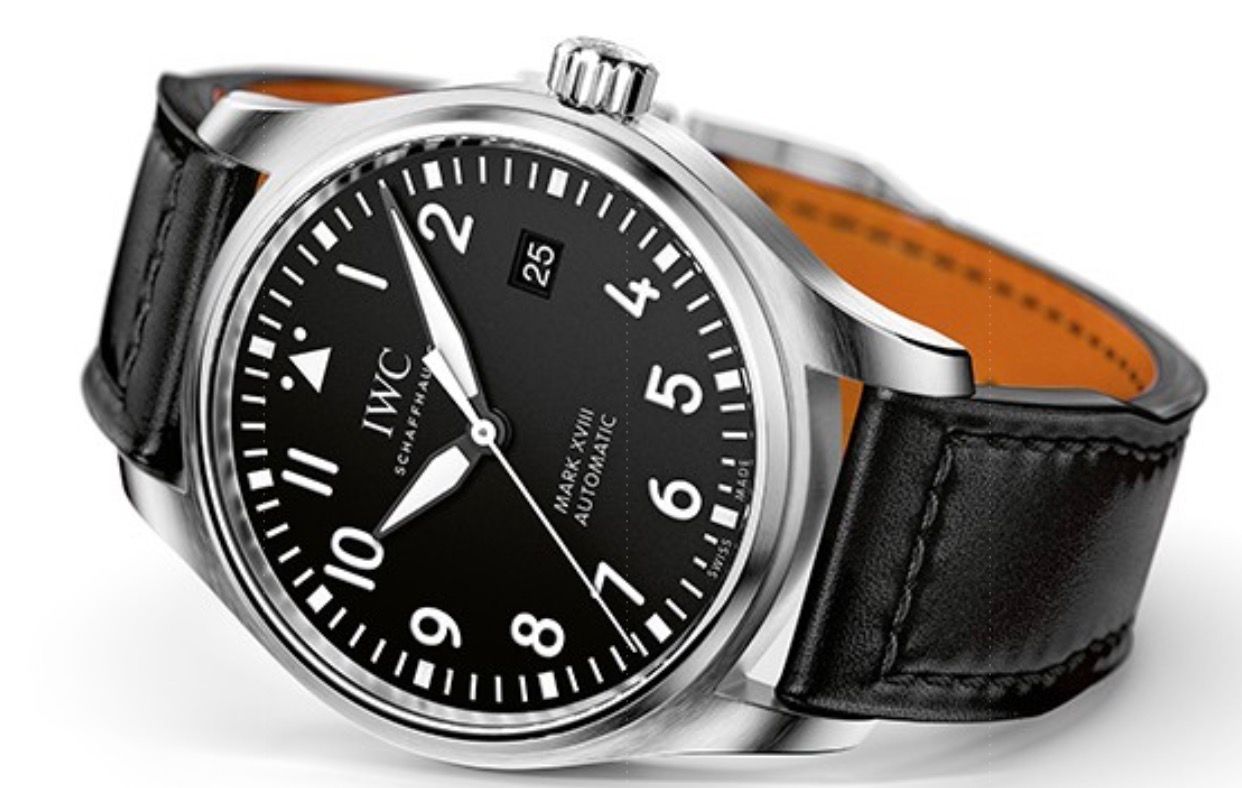

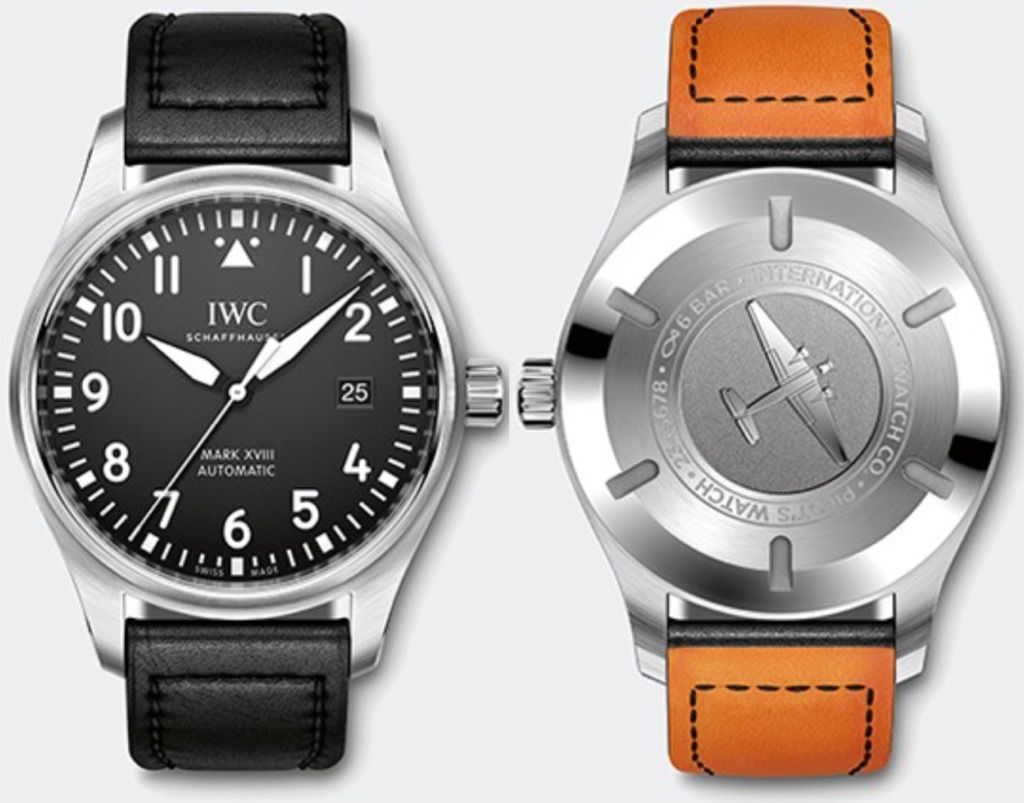
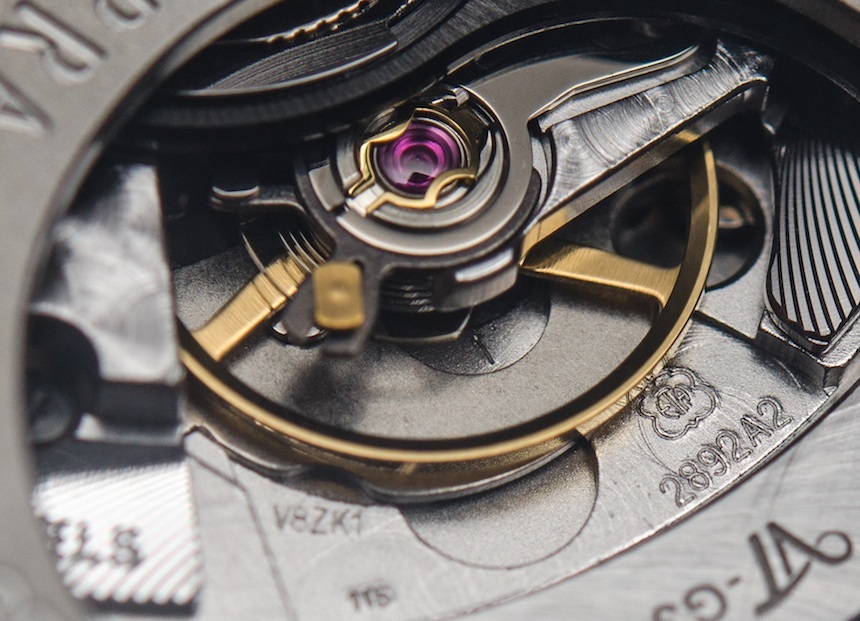
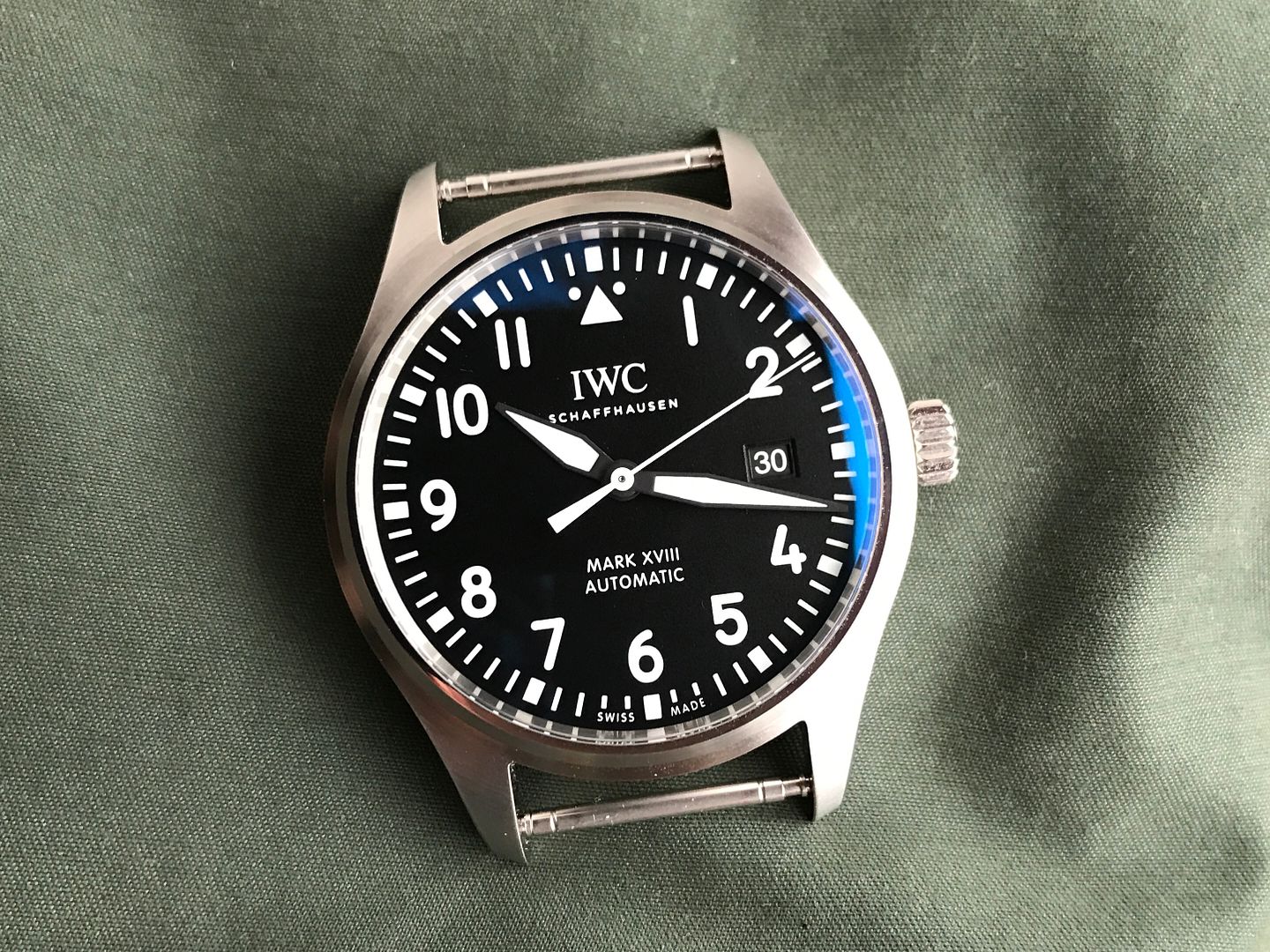


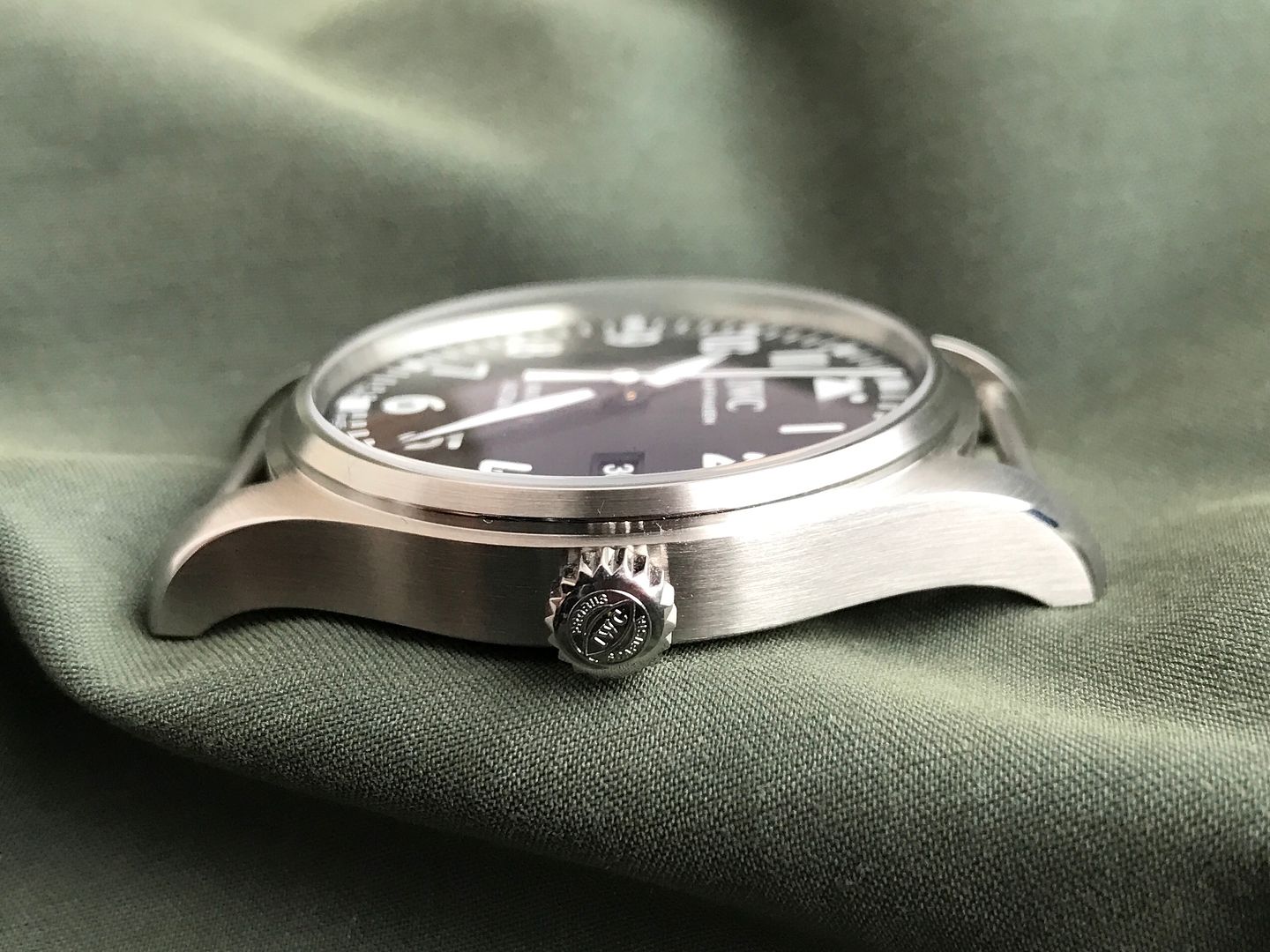
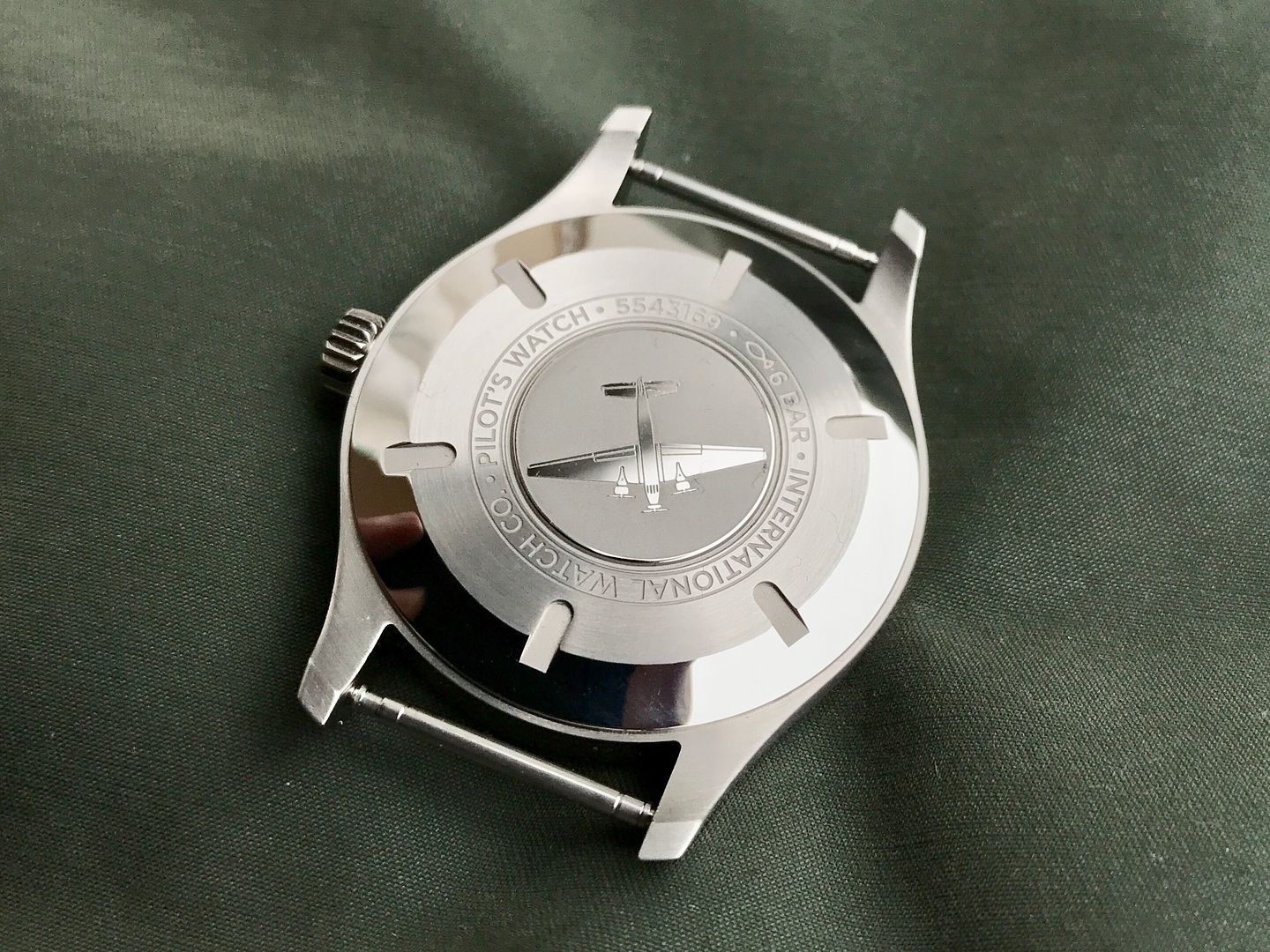
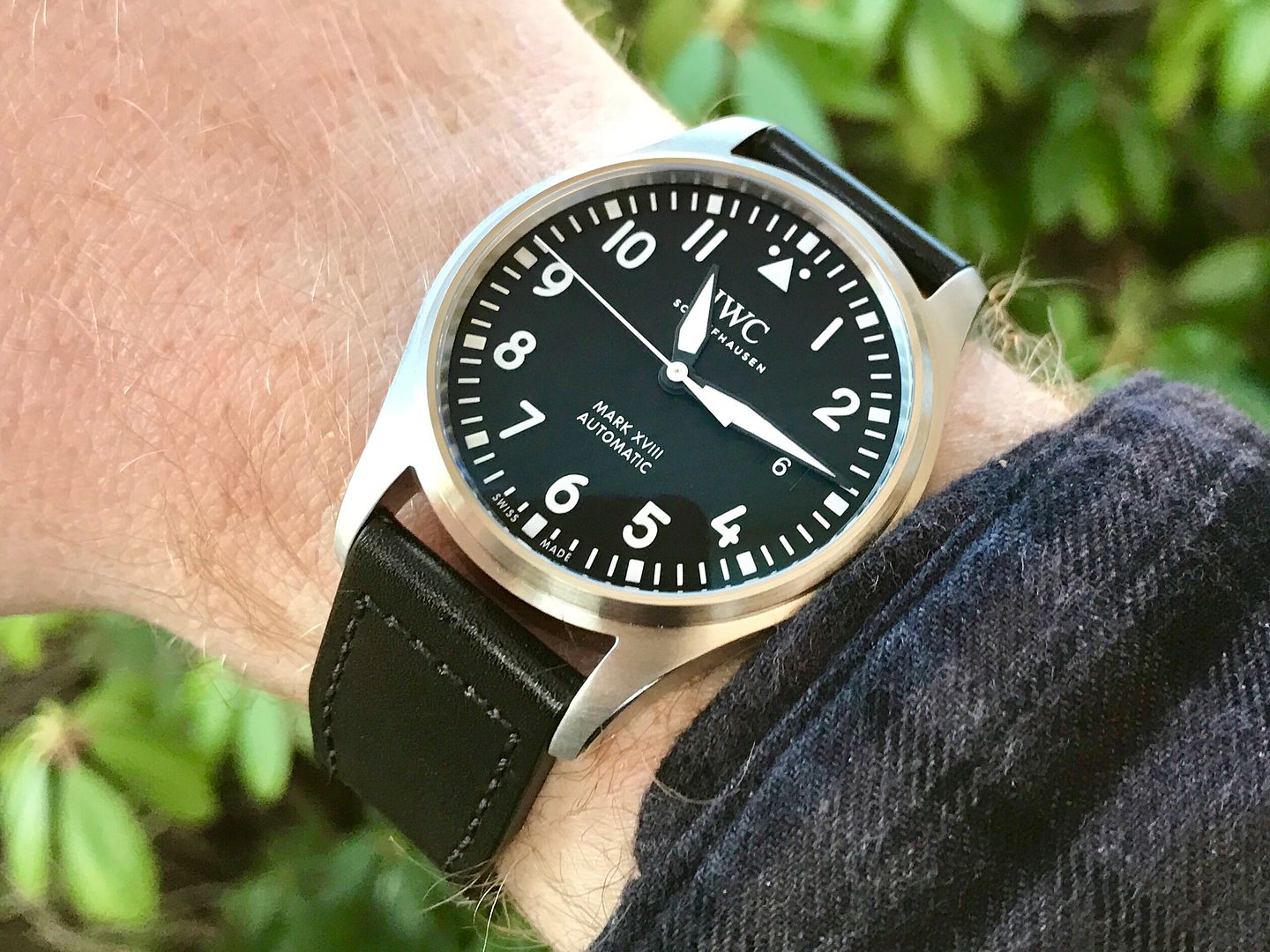

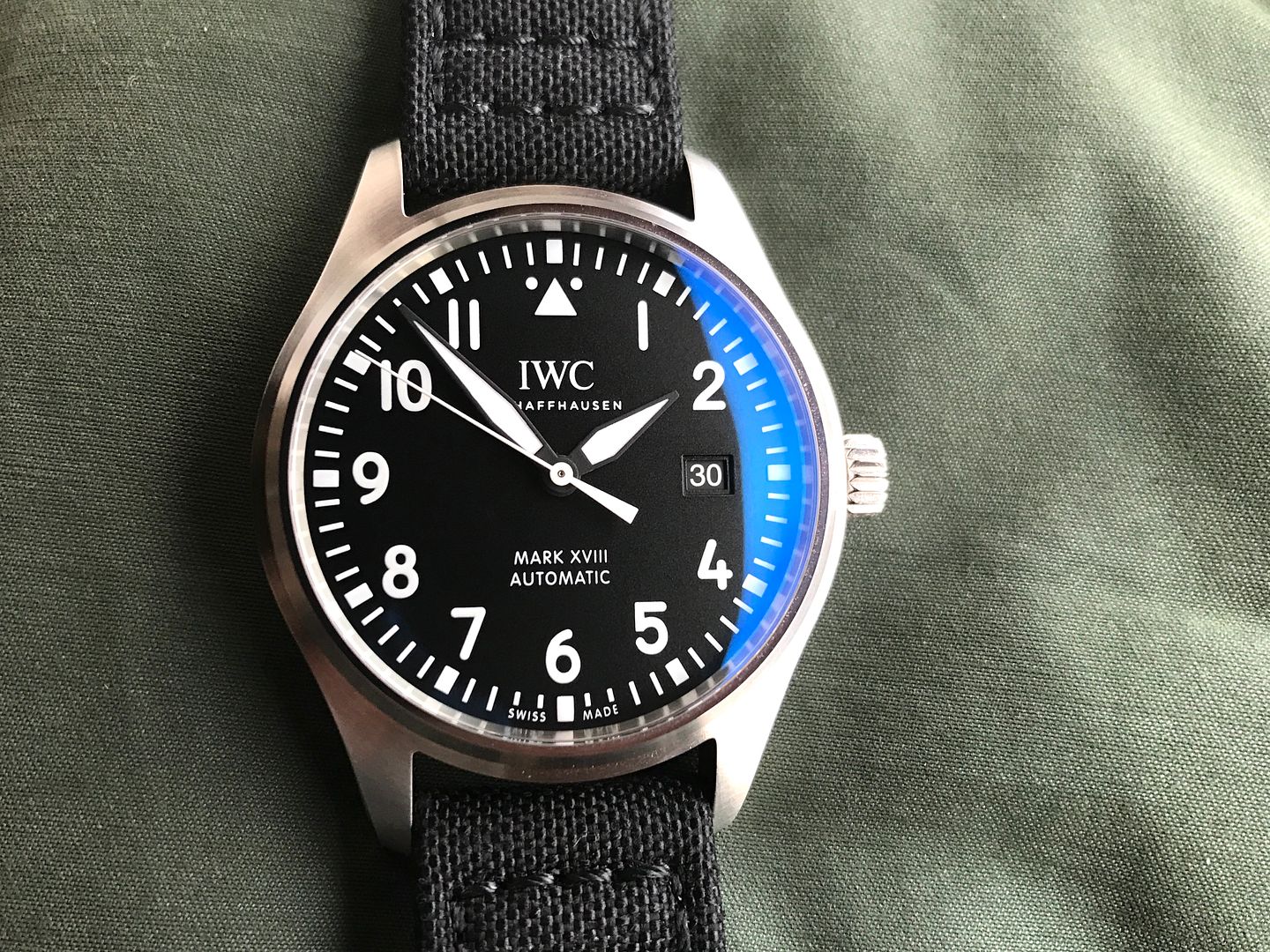
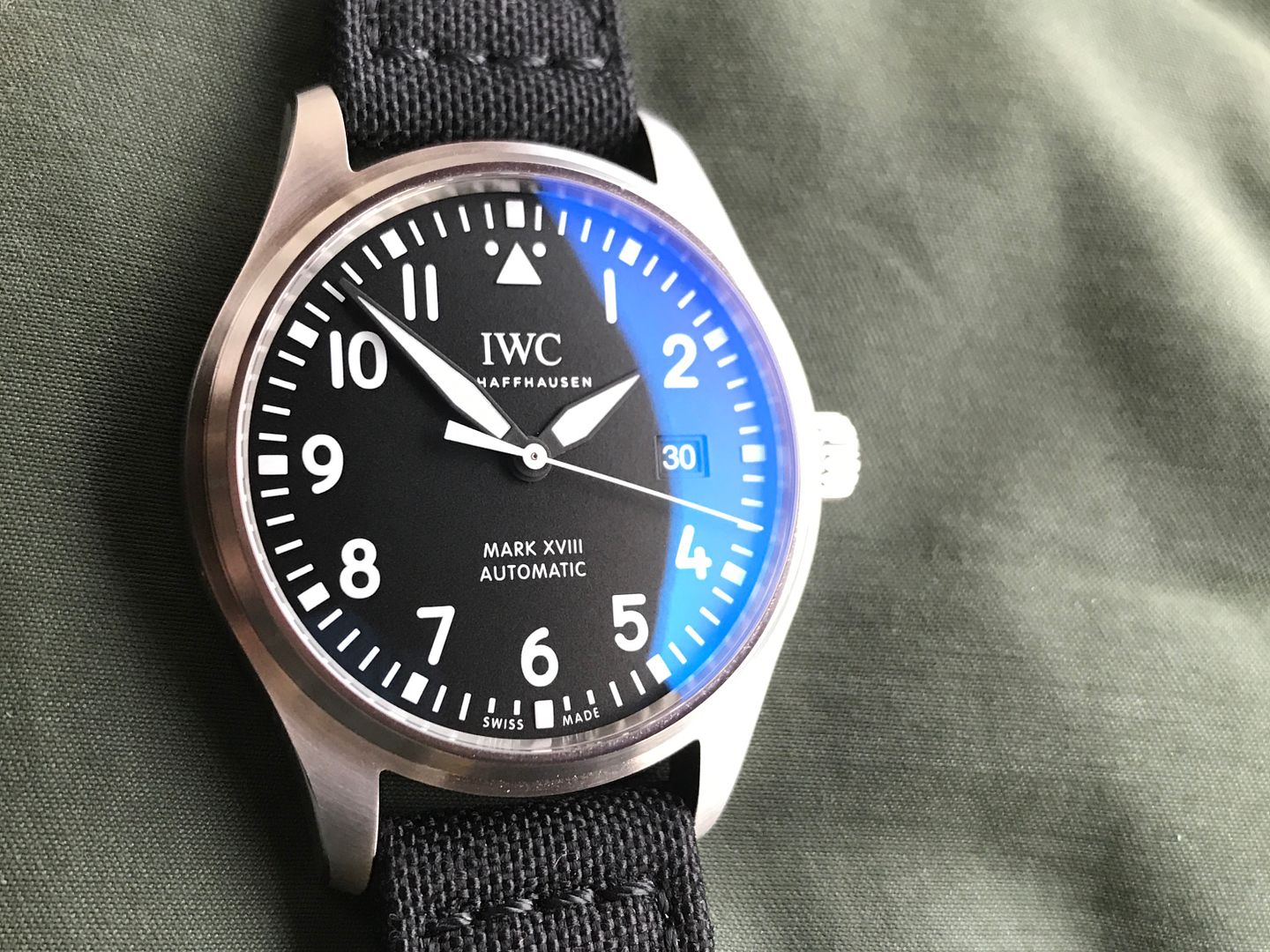
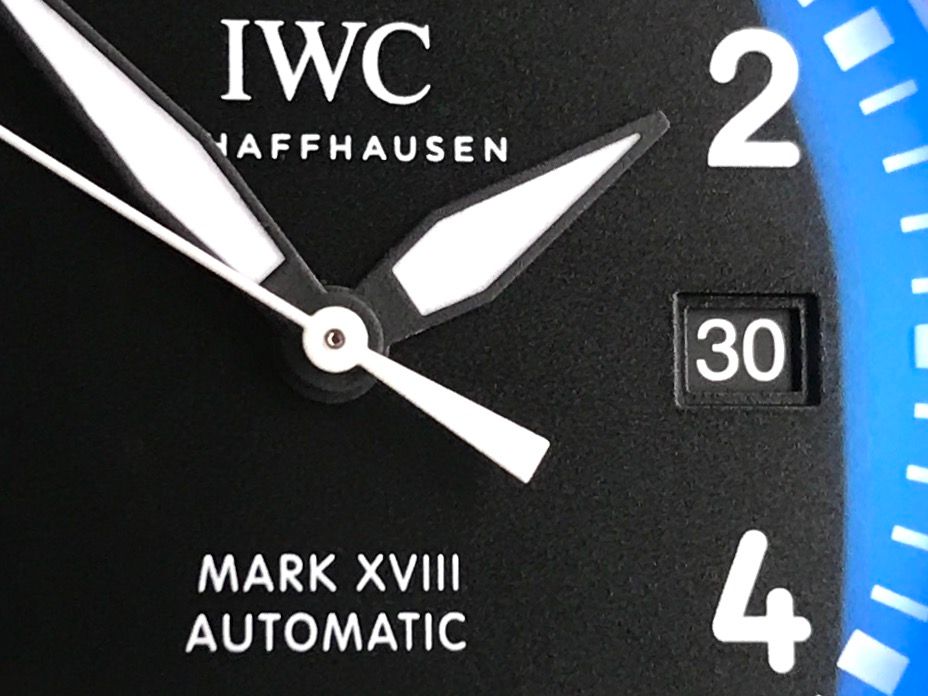
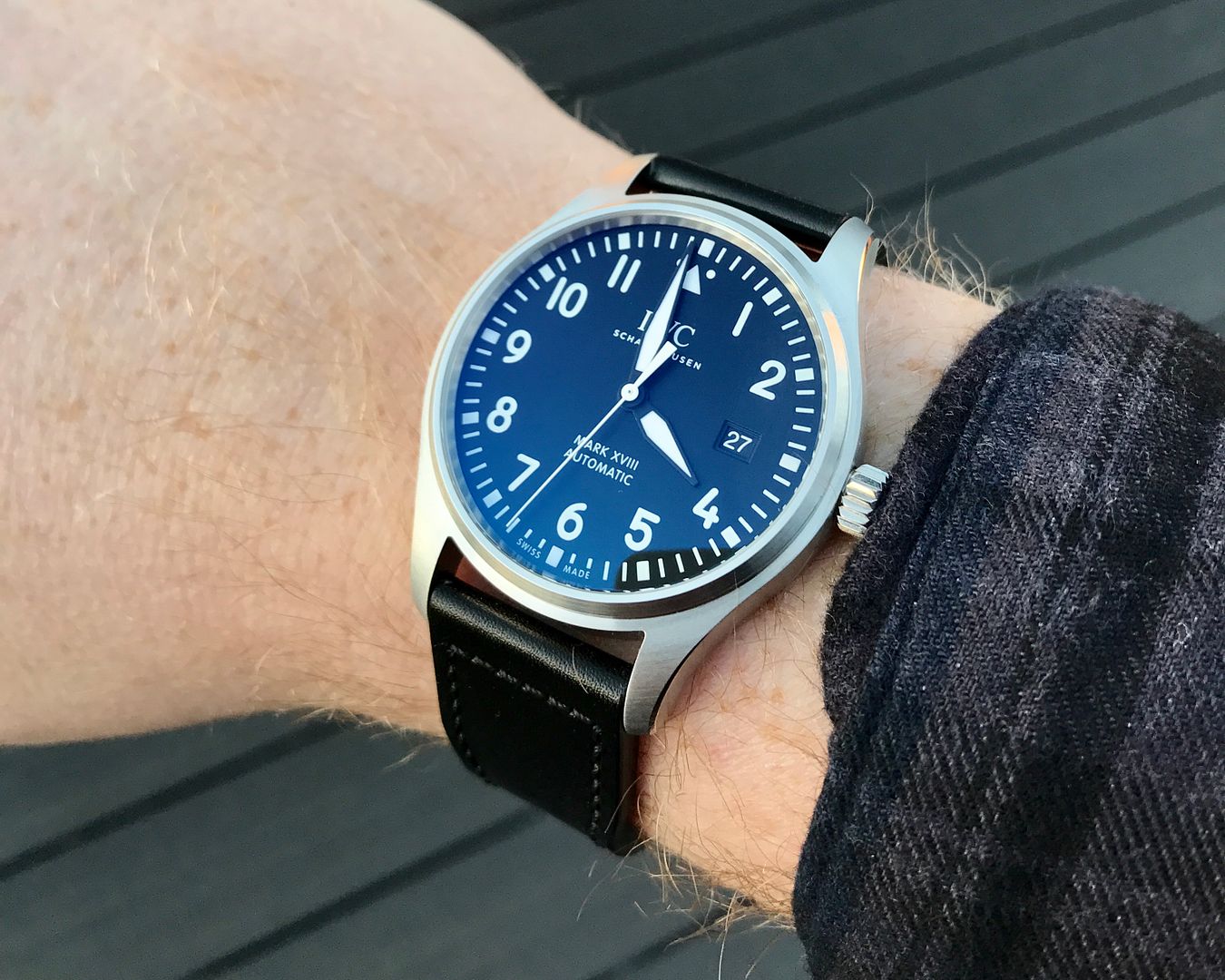

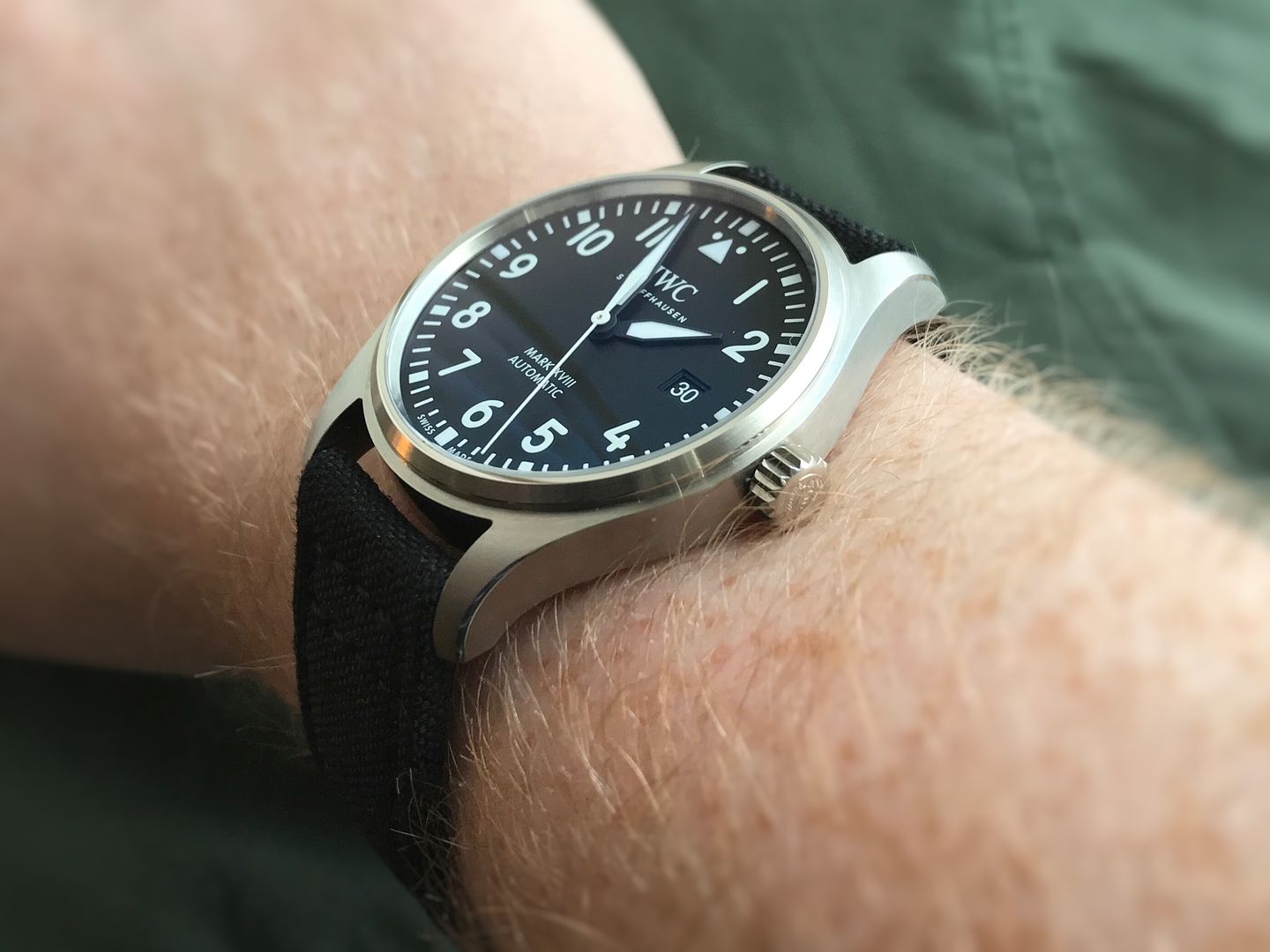

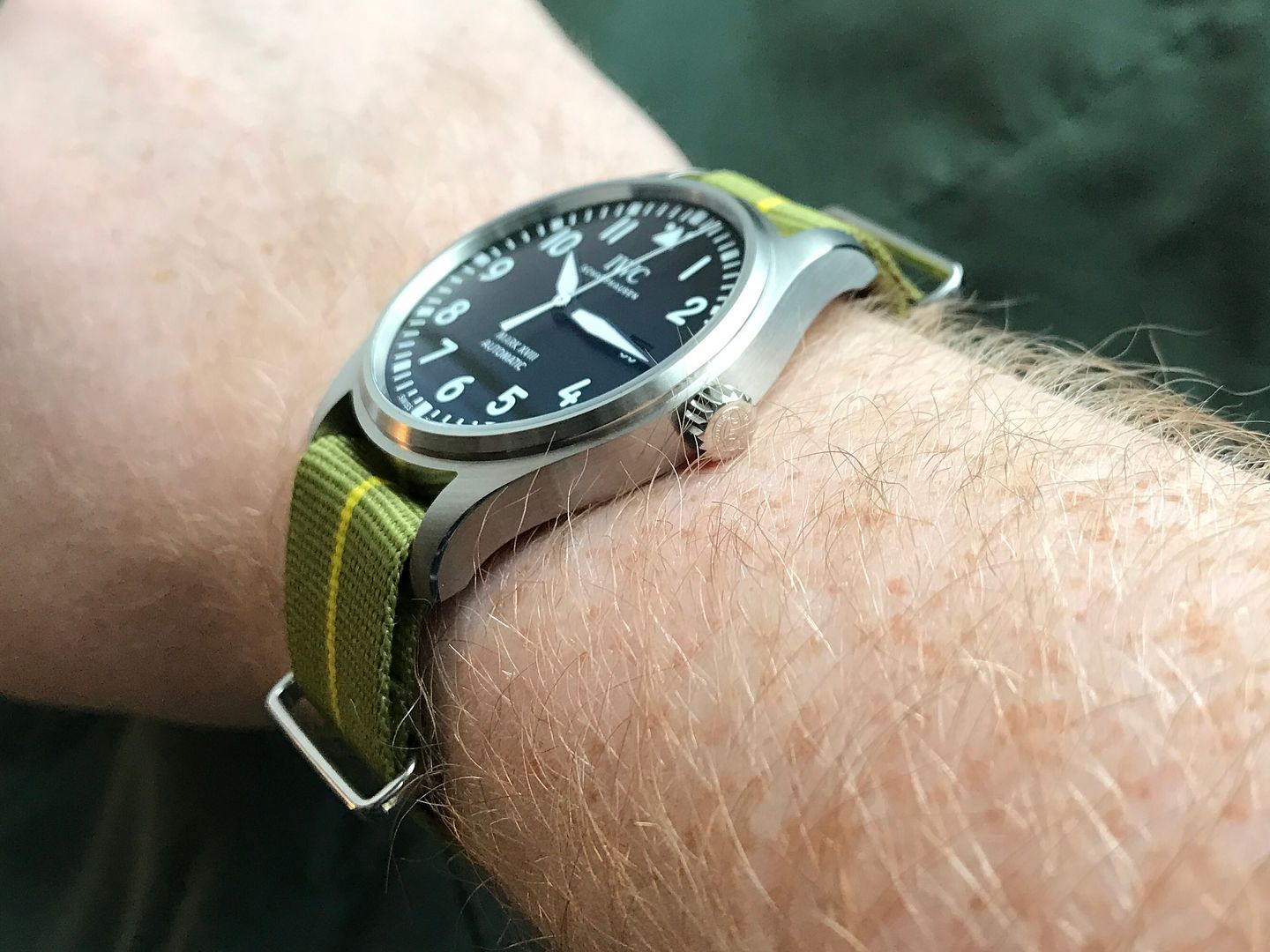
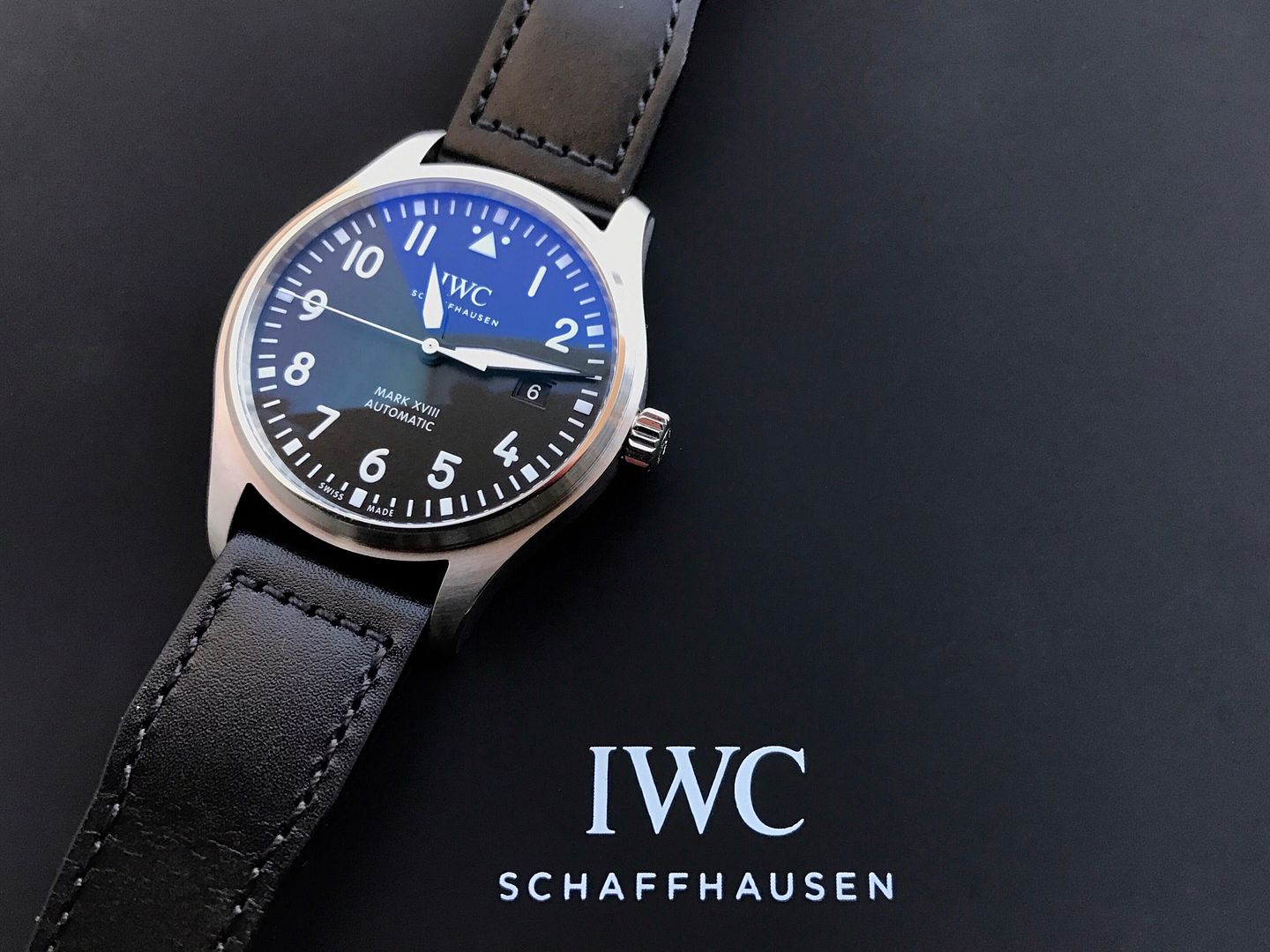

 Reply With Quote
Reply With Quote